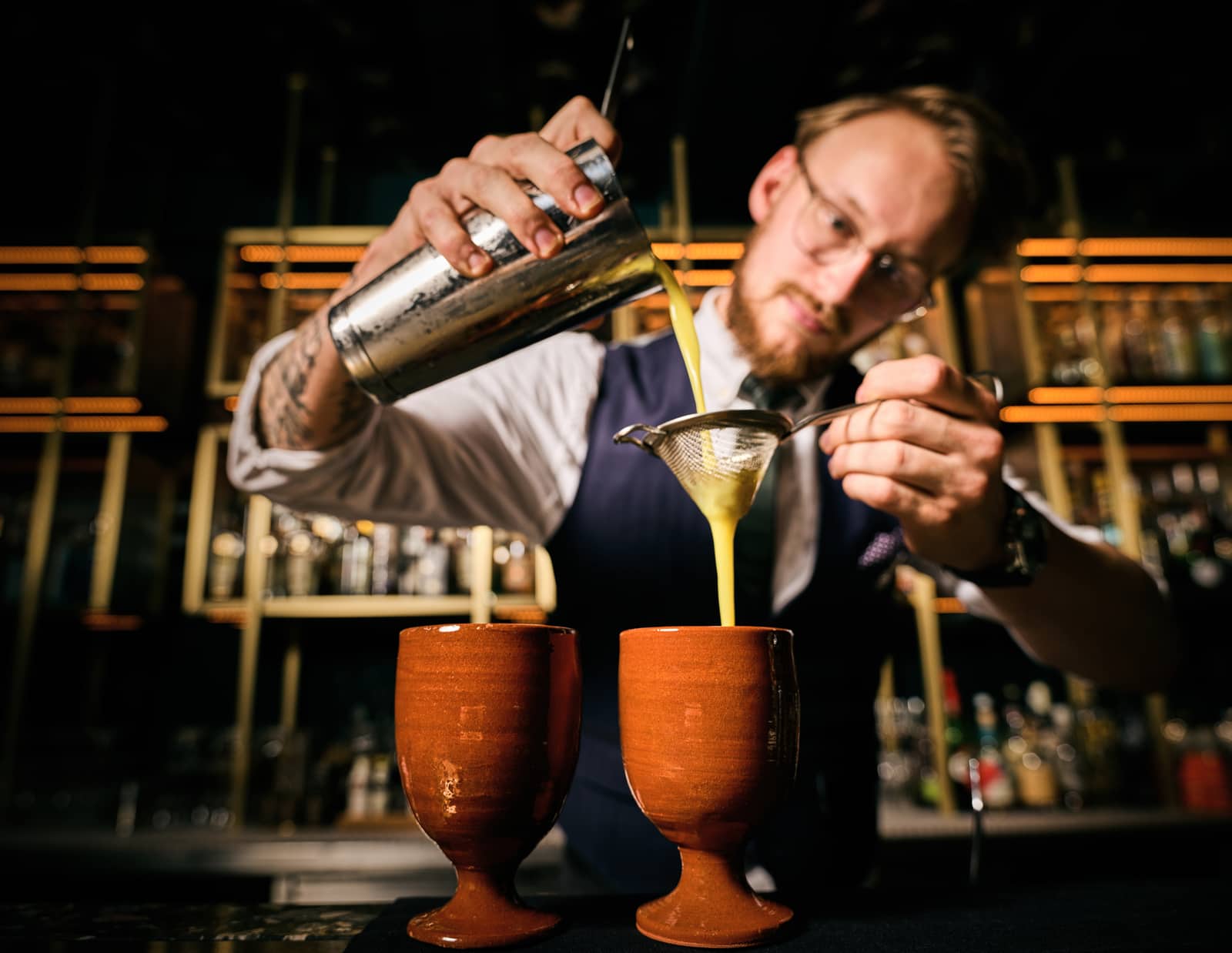Before the English had gin, the Dutch had genever—a juniper-flavored spirit considered to be gin’s modern precursor. “Here in the Netherlands, we love saying that they tried copying it,” explains Thomas Datema, the lead bartender at House Bar in the new Kimpton De Witt Hotel in Amsterdam. “But they failed and made gin instead.”
The Dutch have been making genever since at least the 16th century. During the Eighty Years’ War, English soldiers allegedly watched their Dutch allies take a swig before heading into battle—giving birth to the term “Dutch courage”—and then wound up creating gin when they tried to distill their own version back home.
Despite a juniper-forward profile, the drinks are surprisingly different: Genever’s base of neutral spirit mixed with malt wine (a distillate of rye, wheat, and corn) imparts a malty richness with a body more similar to a blended whiskey than a crisp gin. Over the years, a vast flavor spectrum developed, from the lightest jonge (a clear spirit with no more than 15 percent malt wine) to the heaviest korenwijn (at least 51 percent malt wine).
Two world wars and evolving tastes led to a 20th-century decline for genever, but new brands like Kever, Jajem, and By the Dutch are updating the spirit’s old-fashioned reputation for a new millennium.
“We had an ambition to make a genever for our generation,” explains Kever cofounder Leonard Crijns, who started the company in 2015 with three friends. “It’s a pity to [drink] spirits from all over the world like whiskey and tequila, while in the Netherlands we have our own category.” Kever’s eye-catching packaging looks more like an olive oil can than the clay bottles of the past and contains a golden-colored oude (old-style) genever that’s composed of 22 percent malt wine and a heady botanical mix of juniper, cinnamon, gentiana root, and tonka beans.
The spirit’s popularity has taken off at Amsterdam’s cocktail bars, in particular. Kevin Stroud-Kroon, bar manager at the renowned speakeasy Door 74, combines Rutte Old Simon genever with Cocchi red vermouth and Schladerer raspberry eau de vie for a drink called Simon the Fruit Vendor. “The maltiness in genever makes a huge difference,” he says. “If you explore its entire flavor profile and add fruits or herbs, the spectrum is larger than what gin has available to work with.”
In fact, the exceedingly versatile Dutch spirit can replace just about anything as the main base in a cocktail. At the House Bar, for instance, Datema sometimes substitutes an aged korenwijn for whiskey, producing a smoother take on a traditional Manhattan, or an old-style genever in place of the gin in a Martinez. “It’s one of the reasons I have such a large collection of genevers,” he says. “Because there’s something for everyone.”
